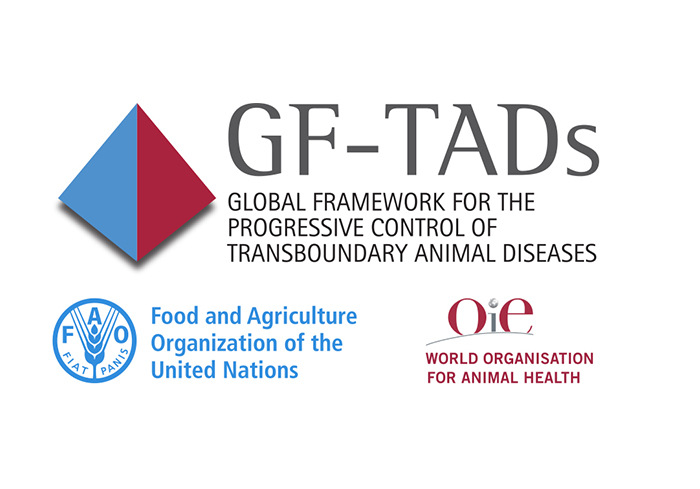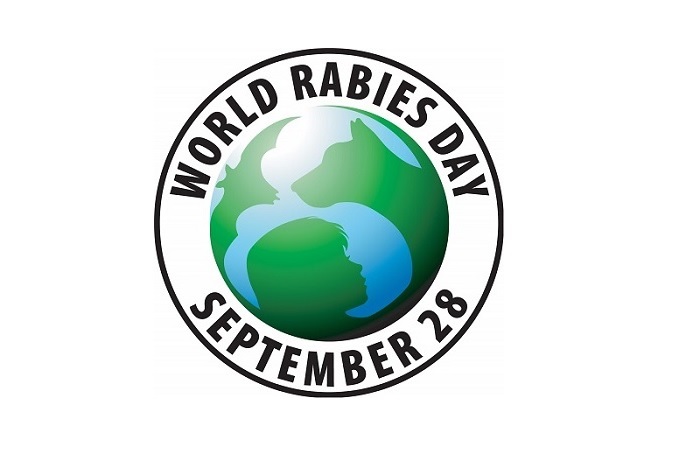
As part of the coming World Rabies Day 2021 celebrations, the OIE Regional Representation for Europe in Moscow made an interview with Dr. Florence Cliquet, Research Director of the Reference Laboratory for Rabies of the World Organisation for Animal Health (OIE) and the World Health Organisation (WHO).
Oral vaccination of wild animals became the most efficient, cost-benefit and ground-breaking method to eradicate rabies in many European countries, but its implementation requires a strong commitment from the national authorities. In this interview, Dr. Cliquet explains the indispensable components of oral vaccination campaigns and shares her knowledge on this unique method.
Research Director of ANSES Laboratory for Rabies and Wildlife, Reference Laboratory for rabies for the OIE, WHO and the European Union.
PhD in Immunology and Biochemistry.
F.C.: Wildlife is the main reservoir and vector of rabies in Europe, mainly foxes. They can transmit the disease to domestic animals, pets and humans. It was therefore important to find an efficient way to immunize fox populations with vaccines. Oral vaccination by aircraft and helicopter became the solution. The method is based on the distribution of baits with vaccines in capsules, blisters or plastic sachet from the air, which are then consumed by animals.
The vaccination is performed in spring and autumn, and no interruption should occur before rabies elimination is achieved to maintain a sufficient vaccination coverage of fox populations. Therefore, as soon as the programme starts, budgets should be allocated each year for vaccination and also for disease surveillance.
This is a unique way of animal vaccination on large areas and rabies is, so far, the only disease to have such a method of control. Oral vaccination was implemented on a large scale in the last 30 years in western, central and northern Europe, as well as in southeast European countries. This strategy has become a very efficient way to eliminate rabies.
The elimination of rabies should be a political decision, strongly supported by national authorities. Once a country starts to implement a rabies eradication programme, it should continue until the elimination of the disease, without interruptions.
F.C.: The method, as well as the first oral vaccine baits, were developed in the 1970’s by a team led by Dr. Franz Steck and Dr. Alexander I. Wandeler* – researchers from the Swiss Rabies Centre. The first oral vaccination campaign started in 1978 in Switzerland on a very small territory to test the feasibility of the method. Later, European countries, such as Germany, Luxemburg, Belgium, Italy and France followed the Swiss example.
In the beginning, these countries tested the method in very limited areas. Then, they extended vaccination areas progressively. Most of these states have declared themselves to be free of rabies at the beginning of the 21st century. They were progressively followed by northern and central European member states. The network of experts on rabies is currently supporting eastern European countries to reach zero cases of humans dying of rabies by 2030. I truly believe this is an achievable goal for this subregion.
Today, the oral vaccination strategy is well standardized due to the efforts and knowledge from other countries. Let’s say – they had a lot of problems. While we knew that challenges could occur, the method could still easily be used on a large scale because it is well developed and clearly written.
But I recommend countries to start slowly, by testing the feasibility under local conditions.
* Dr Alexander I. Wandeler is one of the authors of the book “Historical Perspective of Rabies in Europe and the Mediterranean Basin,” published by the World Organisation for Animal Health (OIE), in conjunction with the World Health Organisation (WHO) and the Veterinary Laboratories Agencies (UK).
F.C.: The elimination of rabies should be a political decision, strongly supported by national authorities. Once a country starts to implement a rabies eradication programme, it should continue until the elimination of the disease, without interruptions. If there are interruptions, all the previous efforts could become useless. Considering the cost of the method, the budget should be allocated for a long-term period, 5-6 years minimum.
There are also some specific recommendations to consider during the implementation of the vaccination campaigns:
For example, rabies is endemic to the wildlife in Ukraine. Vaccinating the entire surface would be an enormous task, so the first step could be to define an adequate area. The country has started vaccination campaigns in the western regions – close to the Polish border. This has turned out to be beneficial for both countries, since the possibility of reinfection on both sides of the border has decreases.
F.C.: Ideally, if a country implements vaccination campaigns of wild animals twice per year in all infected areas, with no interruption in the programme, and follows the above-mentioned recommendations, rabies could be eliminated within 5 or 6 years. The first results, such as a decrease in rabies incidence, can be observed after two or three vaccination campaigns. However, this timing depends on certain local geographical conditions.
I am inspired by the fact that I can personally help and contribute – with OIE, as well as other international organisations – to achieve zero human deaths from dog-mediated rabies by 2030. It will be difficult, but if we all work together – we can succeed.
F.C.: Two vaccines are currently used in Europe, both are live vaccines. The oldest one is a classic live attenuated vaccine. The other one is a recombinant vaccine, a GMO vaccine where the strain of the virus has three directed mutations.
F.C.: Our laboratory, the Nancy Laboratory for Rabies and Wildlife, belongs to ANSES, the French Agency for Food, Environmental and Occupational Health & Safety. It is the Reference Laboratory for Rabies for the OIE, the WHO and the EU. It was founded in 1971, three years after the notification of rabies in foxes in France. Therefore, we are the national reference laboratory, working on rabies in animals and dealing with diagnostics, serology, molecular biology and virology.
We work closely with OIE experts on reviewing and updating the Manual of Diagnostic Tests and Vaccines for Terrestrial Animals for the Rabies chapter. We are also part of OIE working groups and projects, for example, the recent OIE Reference Laboratories network (RABLAB).
We work closely with the bordering non-EU countries in geographical Europe and with northern African countries. We provide them technical support particularly for rabies diagnosis, and we are also involved in the OIE twinning projects for rabies control in Asia and Africa.
F.C.: I have been working on rabies since 1992. The first position I applied for was a veterinarian, even though I am an immunologist. However, the head of the laboratory accepted my candidature to work with rabies. I was very motivated and decided to continue within this research area because rabies is a very interesting disease.
It is a challenge for me – to make my small contribution to rabies control, notably in countries where the situation is difficult and rabies continues to kill, in particular children. Dying of rabies today is not normal – we have all the means to eliminate this disease; we have vaccines.
I am inspired by the fact that I can personally help and contribute – with OIE, as well as other international organisations – to achieve zero human deaths from dog-mediated rabies by 2030. It will be difficult, but if we all work together – we can succeed.




